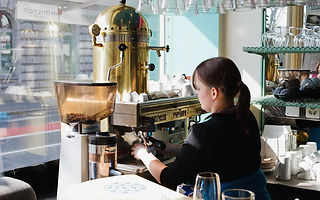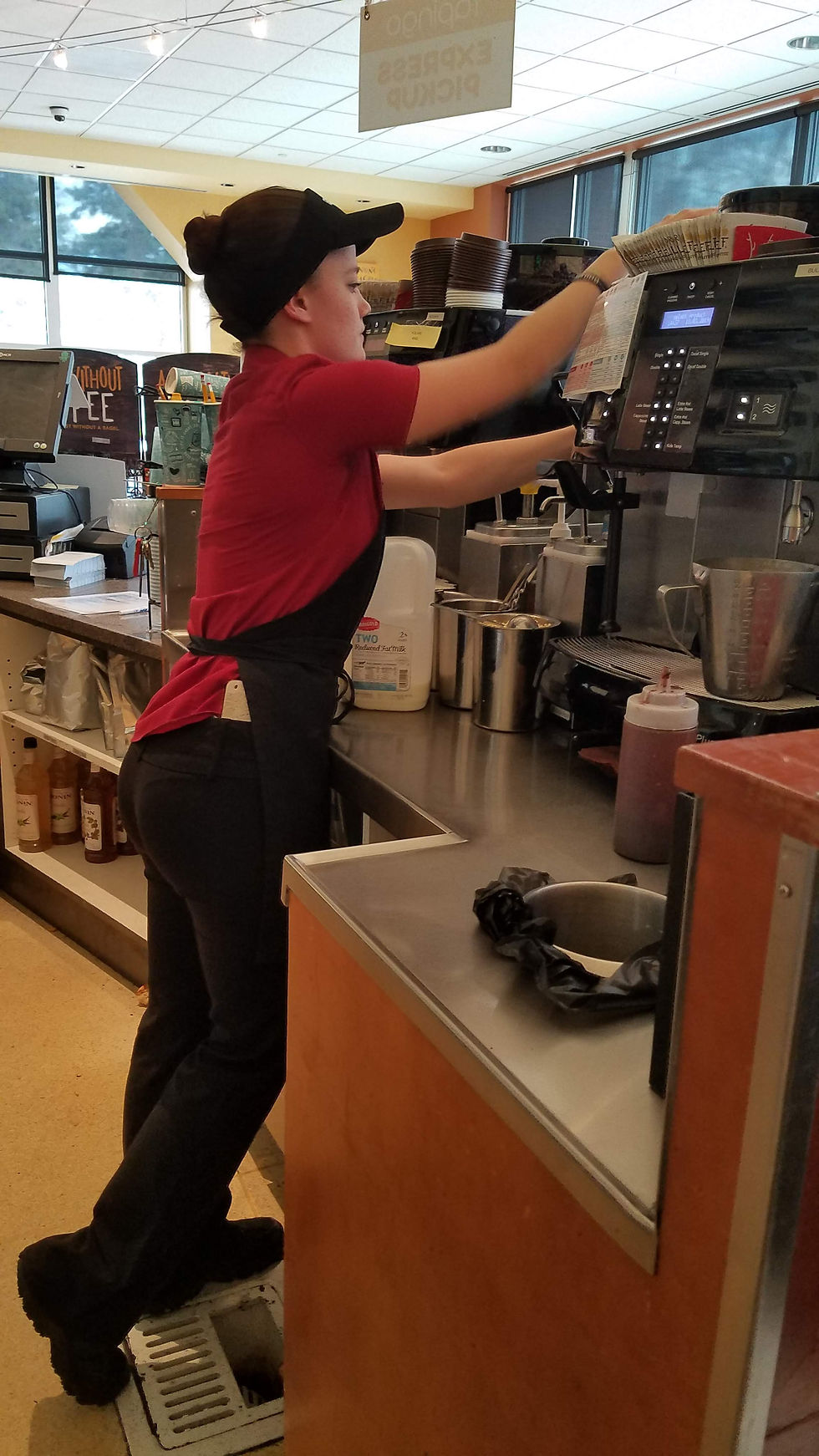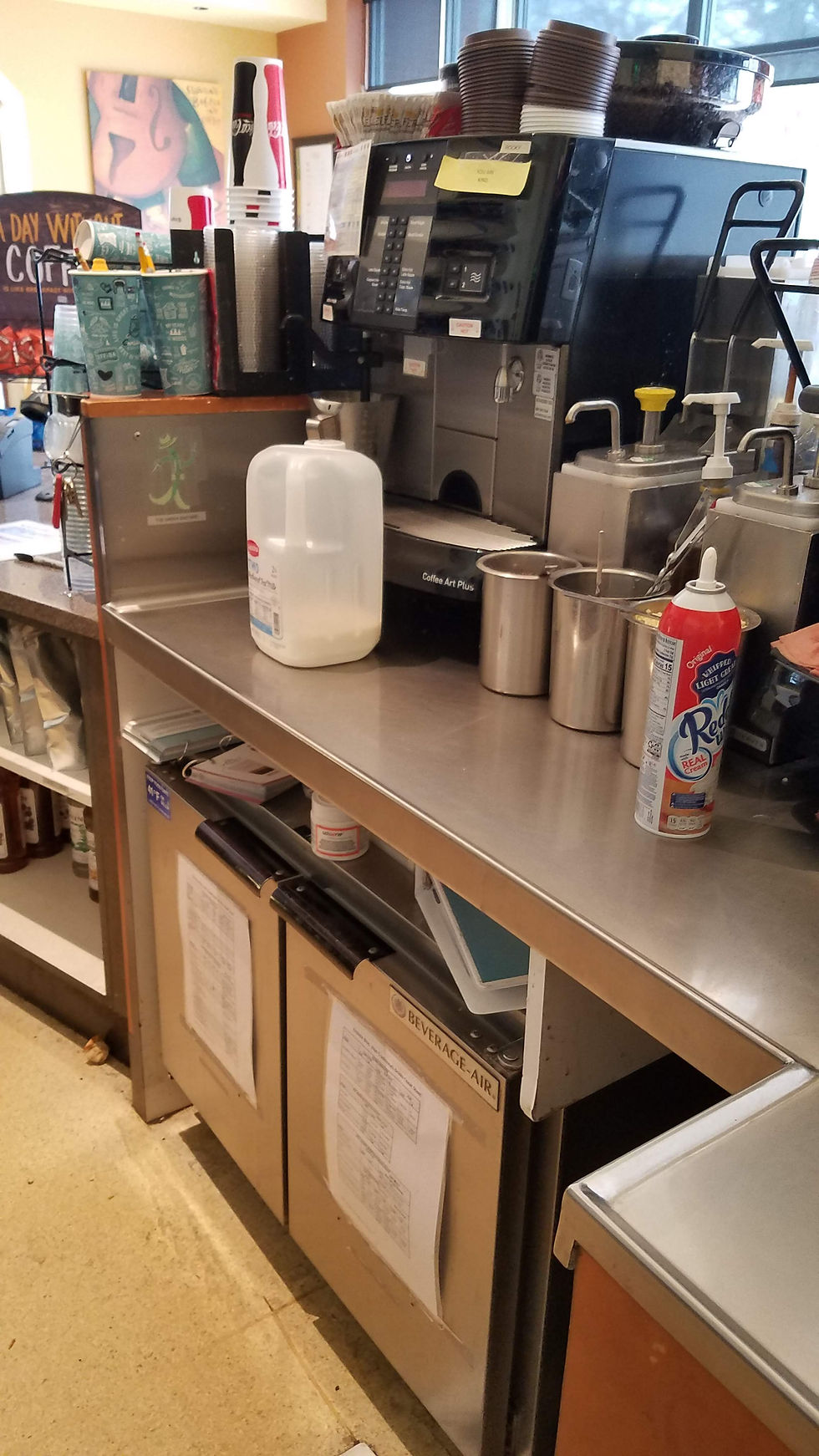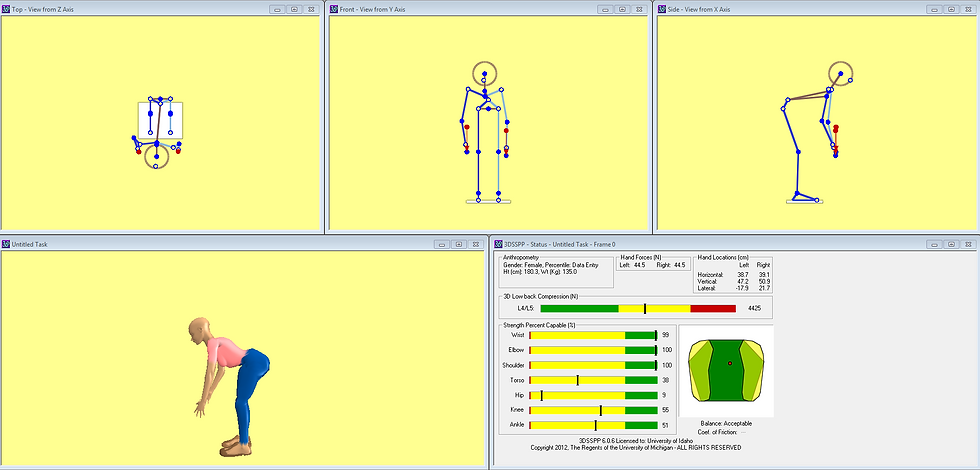Ergonomic Assessment of a Barista Workstation
IDENTIFIED ERGONOMIC RISKS FACTORS OF BARISTA WORKSTATION & REDESIGN SOLUTIONS
OVERVIEW
A Barista’s occupation involves many dangerous situations that can often lead to injury. The duties of a Barista involve handling liquids & tools at high temperatures, serving customers under time-pressure, & carrying out physically exerting tasks in small, cramped work areas.
Barista’s also face the risk of developing musculoskeletal disorders due to spending long hours standing, & engaging in awkward postures, movements, & excessive force in the wrists, elbows, shoulders, & lower back.
I chose to conduct my ergonomic evaluation on the workstation of a barista, due to the various risks that are typically associated with the occupation. I identified three key tasks performed by Baristas, & their ergonomic risk factors. Furthermore, I determined appropriate interventions to reduce risk factors.

THE CLIENT
-
Position: Manager & Barista at Einstein Bros. Bagels location
-
Age: 25 -34 years
-
Gender: Female
-
Height: 180.34cm
-
Weight: 135lbs
-
The client reported having an active lifestyle, & no history of Lower Back Pain (LBP) or injuries
-
The client was comfortable with duties that involved lifting heavy loads, & standing for long periods of time
GATHERING INFORMATION ABOUT OCCUPATION
During an interview with the client, I was able to garner some information regarding her responsibilities as a manager & barista. Her responsibilities included,
-
Preparing hot or cold beverages for customers
-
Cleaning work areas, utensils, or equipment
-
Taking customer orders & operating checkout (with a smile)
-
Serving & preparing food items
-
Restocking supplies needed for beverages & food preparation
-
Completing paperwork, managing shifts
After analyzing the barista responsibilities, I was able to identify the following stressors of the occupation,
Repetitive motions & lifting
when making complicated, multi-step beverages
Standing for long hours during work shifts
Psychosocial stressors such as providing customer service with a smile
Frequent caffeine intake
in high stress situations
Lifting large loads during restocking
In addition, I used the following ergonomic checklists to further establish any risk factors in the workstation.
-
General Ergonomic Risk Analysis Checklist
-
Ergonomic Hazard Identification Checklist
-
Workstation Checklist
-
Task Analysis Checklist
Through the checklists, I was able to establish the following risk factors,
-
Involves a large risk with manual material handling, specifically in terms of reaching, bending, stooping, & conducting frequent, repetitive motions
-
Ergonomic hazards were standing, reaching, & lifting & lowering objects below waist height
After gathering information about job duties & risk factors, I focused on three distinct barista tasks for this ergonomic evaluation.
TASK ONE
The first task I focused on was pumping syrups when preparing flavored beverages. This task is an important step in preparing hot or cold beverages for customers, one of the main responsibilities of a barista. During this step, the client had to reach forward & conduct fast, repetitive motion of pushing downwards.
THE RISKS
Increased
forward reaching & shoulder flexion
When done frequently could result in fatigue
Repeated pumping movements increased risk of shoulder CTDs

Challenging with large counter space between edge & pumping station, & petite stature of client

Repeated motions may result in CTDs
RECOMMENDATIONS
I determined that the following solutions would minimize the risk of shoulder cumulative trauma disorders (CTD).
-
Make pumping station more accessible by reducing distance between counter edge & syrup pumps
-
Enforce job rotation to prevent the strain from repetitive motions
TASK TWO
The second task of focus entailed stooping below waist height, & reaching with one arm to lift a one-gallon milk jug from the mini fridge underneath the counter. The task was repeated frequently throughout a shift, & involved asymmetric load handling.
THE RISKS
Asymmetric load increased compression & shear forces on the spine
Decreased
postural stability
Increased risk of lower back, elbow, & wrist pain

This task involved stooping below waist height to access large loads
POSTURE ASSESSMENT USING 3DSSPP
I was able to assess the stooping posture with the given height measurements in 3DSSPP (software which simulates task to assess posture data, & strength requirements) to assess the level of risk associated with the posture. I found that while the balance of the posture was acceptable, there was high to moderate risk in the torso, knee, hip, & ankle joints. The level of compression showed that the L4/L5 discs are at moderate risk. The following images depict the stooping posture views & risk assessment obtained from the 3DSSPP simulation software.

Simulated views of the stooping posture conducted by client to complete task

Risk assessment of stooping posture
RECOMMENDATIONS
I determined that the following solutions would eliminate the risk of lower back pain (LBP).
-
Place mini-fridge on top of the counter (above waist height), to prevent below the waist stooping
-
Lift the load with both hands to prevent the risks associated with handling asymmetric loads
Since counter space is limited at this venue, & placing the mini fridge above the counter may not be feasible,
-
Squat instead of stoop to reduce the risk of developing lower back pain (LBP)
TASK THREE
Another task that posed a significant amount of risk of developing pain or injury in the lower back, joints, & feet, was standing continuously during long work shifts. My client’s work shift lasted an average of seven & a half to eight hours per day. Furthermore, since my client's duties as a manager involved being in the workstation frequently during her shift, she did not take advantage of the 10-minute breaks, or the complete 30 minutes of her lunch break typically offered to employees at the establishment.
THE RISKS
Increased risk of Lower Back Pain (LBP)
Increased risk of pain in the joints, & feet
RECOMMENDATIONS
I suggest that my client takes advantage of the frequent 10-minute breaks, as well the complete duration of the lunch break. I also recommend following some of the practices below during the break period.
-
Sit in a comfortable chair that provides lumbar support
-
Incorporate stretching into routine to eliminate tightness in muscles that occurs from continuous standing, awkward postures, & frequent load handling
Another way to minimize the risks of standing for long periods of time is to have additional support for the lower back & feet. Integrate additional support,
-
By wearing shoes that have stiff soles & appropriate cushioning
-
Placing rubber or gel mats on the floor